“Georgia 🇬🇪 ~Rabati Castle Fortress in Khaltsikhe, the Road From H E L L, Scenic Photos, and The Black Sea in Batumi”
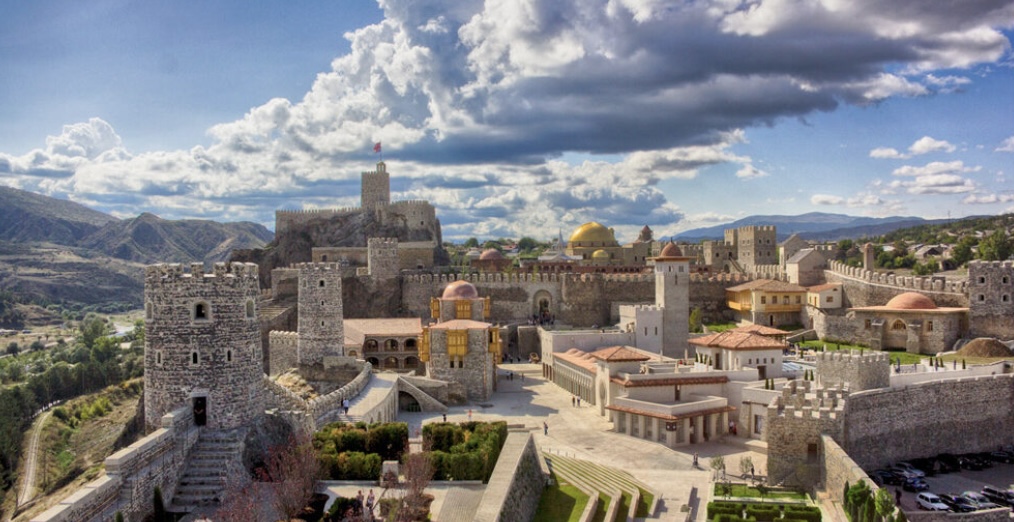
⬆️ We decided to stay two nights in Akhaltsikhe, instead of just one, since the Castle Fort visit would take some time, and we did not want to feel rushed.
When we left Akhaltsikhe, our next stop was suppose to be be a five-hour drive. That five hours turned into an 11-hour, mostly miserable day for us. We did not see this coming at all. (more on that story, below). Thankfully, we have very few bad travel days, compared to the fabulous one, or we would not be doing what we are doing.
It is so nice, not having to make advanced reservations these days; if there were to be an actual upside to this pandemic, this is one I can think of. Anywho, that and being retired, we are afforded much flexibility.
I only read a little about the Rabati Castle being refurbished in 2012, to the tune of millions of dollars. We were very impressed. Rabati Fortress is fabulous!
This stop along the way was not just for the Stronghold, but a convenient location for us to stop in, at the end of our day; on our way to the Black Sea. It’s a very long drive from the eastern border of Azerbaijan, to the west of Batumi; one we would have never “planned” to do in one day.
 Rabati Castle Fortress
Rabati Castle Fortress

 From inside the Fort
From inside the Fort
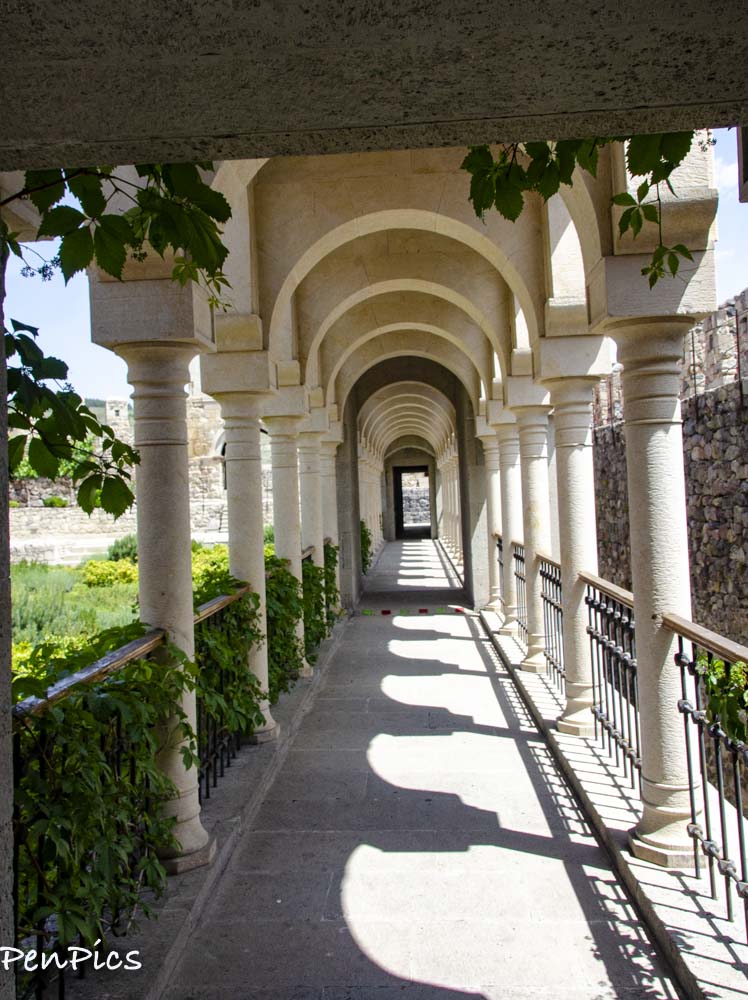





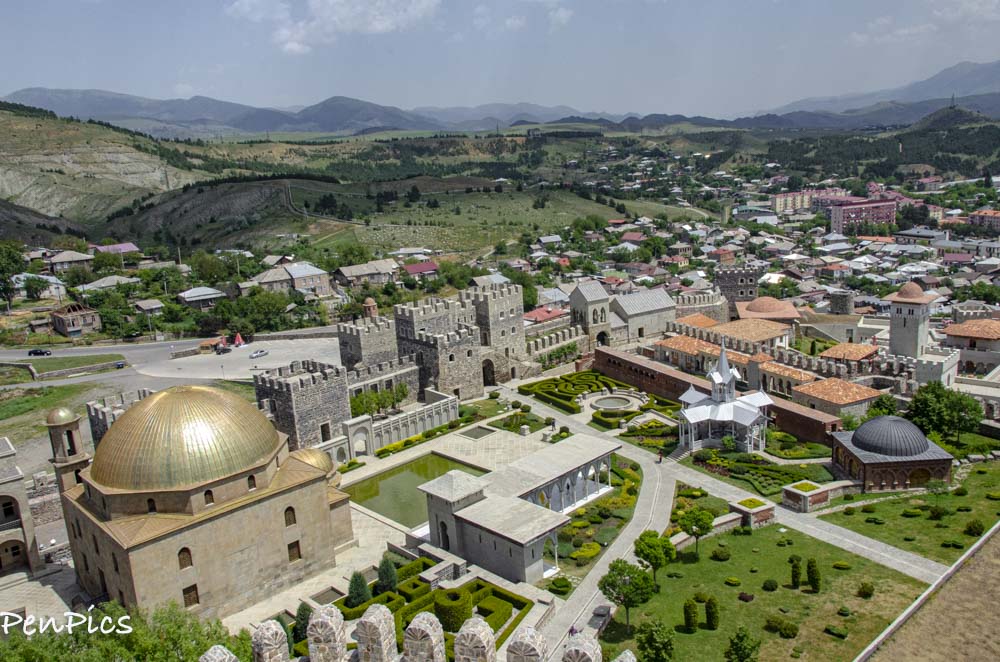 Views from a look-out tower
Views from a look-out tower
 The Dungeon
The Dungeon

 The old stone Rabati Fortress was impressive, AND massive! We got a lot of exercise, today, which is good.
The old stone Rabati Fortress was impressive, AND massive! We got a lot of exercise, today, which is good.
 ⬆️ Hotel Rabath Gino Wellness inside the Fort (on the right)
⬆️ Hotel Rabath Gino Wellness inside the Fort (on the right)
 ⬆️ The same Hotel is now on the left
⬆️ The same Hotel is now on the left
*****
This Fortress stands on a small hill, next to the shores of the Potskhovi River. The name Rabati comes from the Arabic language, meaning “fortified place.”
This stronghold, erected in the 13th century, has witnessed a lot over its long life. The Fortress has been destroyed several times, through many sieges, and as a result, absorbed tracks of different cultures and religions.
In 2012, major renovations took place, after which Rabati Fortress in Akhaltsikhe turned into a town within the town. It has become not only a historical monument, but a real cultural city center.
 ⬆️ Akhmediye Mosque of the 18th century
⬆️ Akhmediye Mosque of the 18th century
In total, there is a church, mosque, synagogue, small park, History Museum, various shops, hotels and even the Civil Registry Office, all inside the Fortress walls.
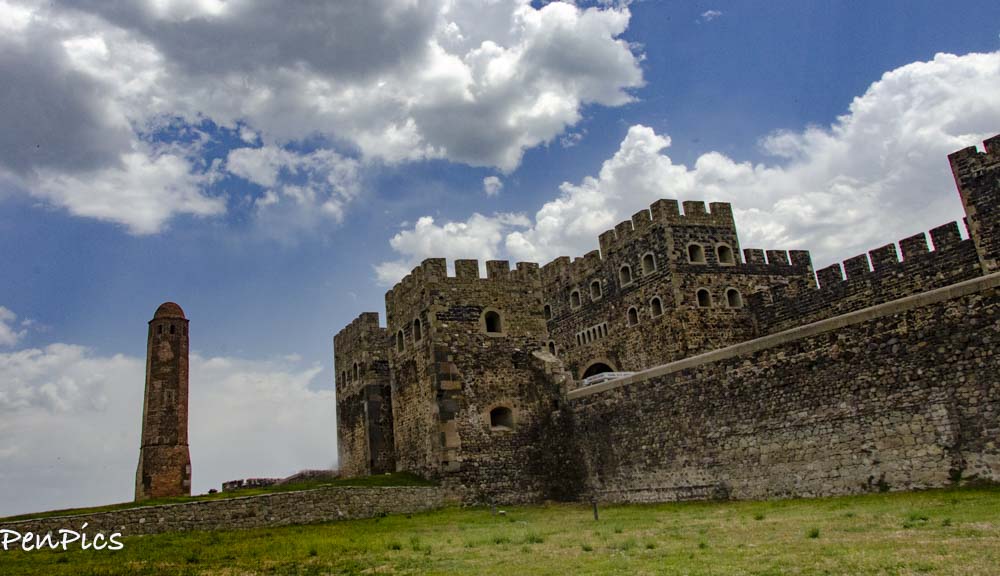 The history of Rabati Fortress goes back many, many centuries and no one can say for sure, when the first fortification actually appeared. It is known, however, that in the 12th century, Djakeli prince’s family had built the first real Fortress and turned it into their residence for 300 years.
The history of Rabati Fortress goes back many, many centuries and no one can say for sure, when the first fortification actually appeared. It is known, however, that in the 12th century, Djakeli prince’s family had built the first real Fortress and turned it into their residence for 300 years.
When the Fortress was erected, it was given the name of “Akhaltsikhe,” which translates to “new fortress, and the name has been preserved for all these years. In 1393, Rabati Fortress was destroyed by the army of Tamerlane who was taking his troops from conquered Iran 🇮🇷, towards the lands of the Golden Horne on the shores of the Caspian Sea. The town and the Fortress had been restored, but 100 years later, in 1486, Akhaltsikhe was subject to destruction by a Mongol; Khan Jakub. Despite the terror, for strategic importance and convenience, the trading routes of the Silk Road, helped the town to revive.
In 1578, Akhaltsikhe was occupied by the army of the Ottoman Empire.
In 1810, Rabati Fortress was seized by Russian troops, but this would not be for long. In the year 1828, during the Russian-Turkish war, united forces of the Russian Empire and Georgia, seized it, with a fierce assault. This event has been depicted in the painting work of a Russian artist; Sukhodolsky “Assault of the Akhaltskikh Fortress on 15 August 1828.”
Later, the Ottoman Empire made several attempts to return the control over of this strategic object, but they all ended up unsuccessful.
After peace was finally established here, Rabati Fortress lost its strategic importance and began to fall into ruins. By the 20th century, fortified walls of this outpost were no longer strong, and due to tense relations between USSR and Turkey, this region became closed and unpopular. Only after the fall of USSR, did the interest of Akhaltsikhe and its Fortress rise again.
In 2011, a massive restoration project of the Rabati Fortress began, and in August 2012, it was opened to the public, and the list of interesting spots on the touristic map of Georgia 🇬🇪 has extended by one more historic gem.
 Today, Rabati Fortress is a genuine cultural and historical complex of over 17 acres. The territory of the Fortress is divided into a lower modern part and upper historical one. The lower part has shops, cafes, restaurant and a hotel. The upper part comprises of the Akhmediye mosque; 18th century, an Orthodox Church; 19th century, Djakeli Palace, and the History Museum. The museum exposition presents an ancient history of Southern Georgia: stone items of the Neolithic Age, bronze axes found in these lands, items related to the primitive society and other artifacts.
Today, Rabati Fortress is a genuine cultural and historical complex of over 17 acres. The territory of the Fortress is divided into a lower modern part and upper historical one. The lower part has shops, cafes, restaurant and a hotel. The upper part comprises of the Akhmediye mosque; 18th century, an Orthodox Church; 19th century, Djakeli Palace, and the History Museum. The museum exposition presents an ancient history of Southern Georgia: stone items of the Neolithic Age, bronze axes found in these lands, items related to the primitive society and other artifacts.
 ******
******
After exploring the Fortress, we hopped back in the car and took a Sunday drive on Tuesday. We found an old village, on the outskirts of the Fortress and drove around. We love finding places where we witness the daily lives of the local people and their places they call home, in every country we visit. It’s a great experience, in addition to the popular touristy sites to see. ⬇️
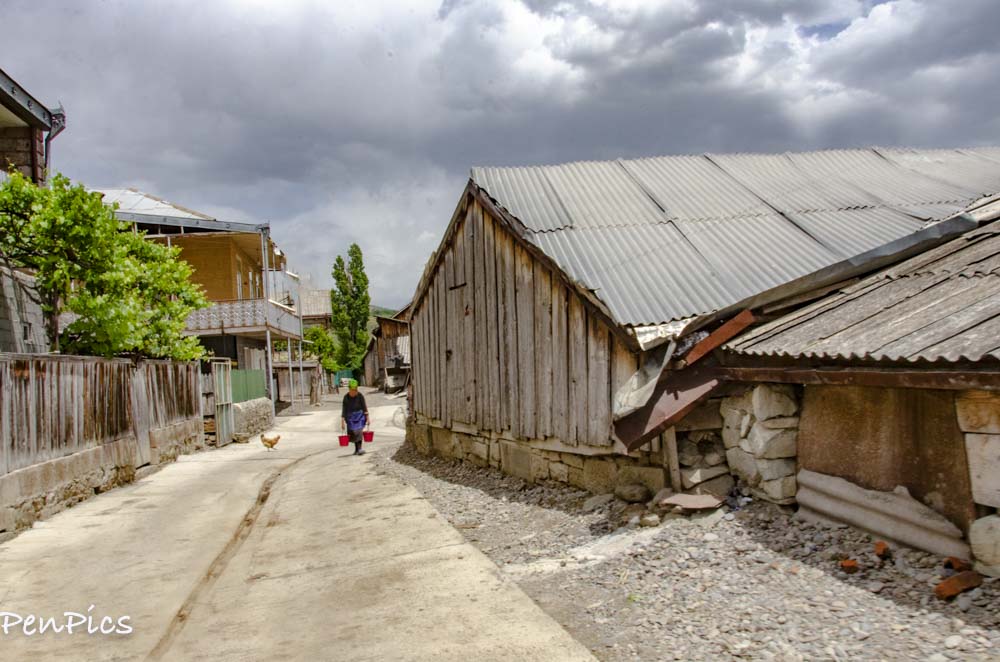

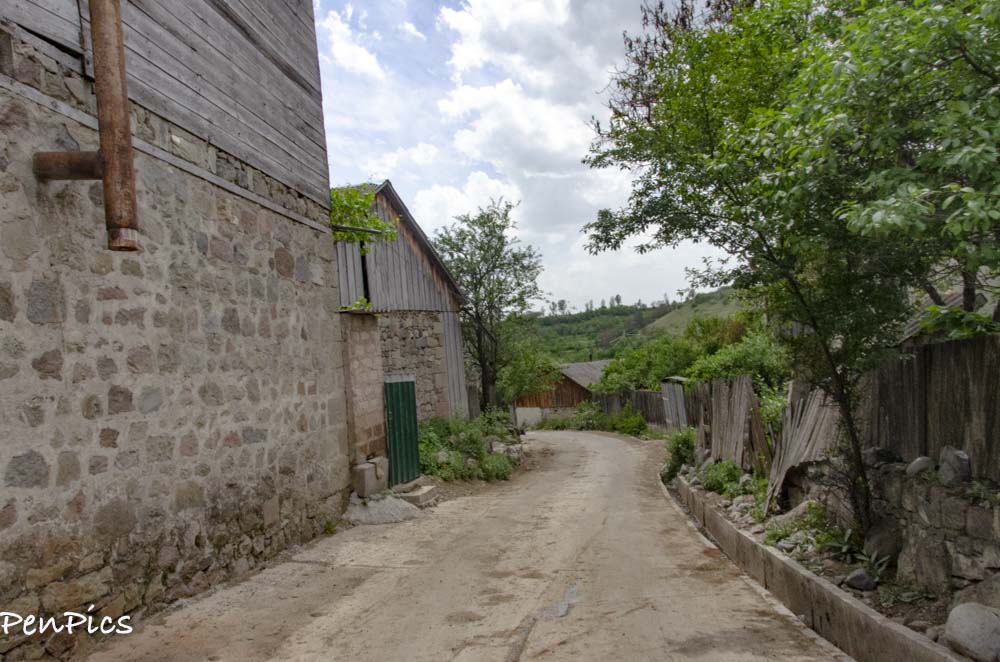
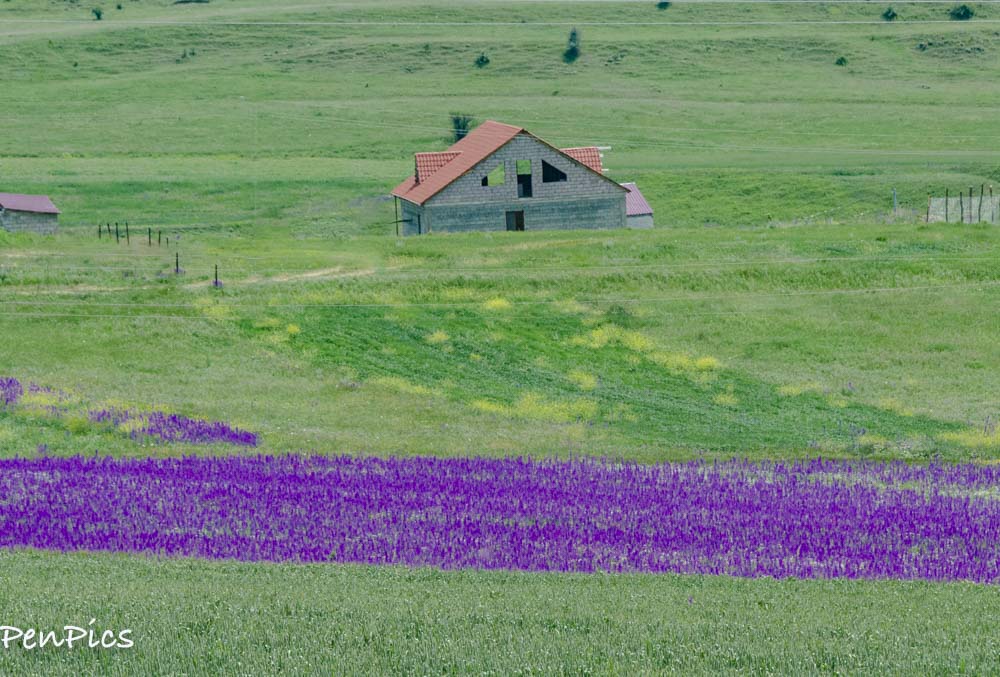

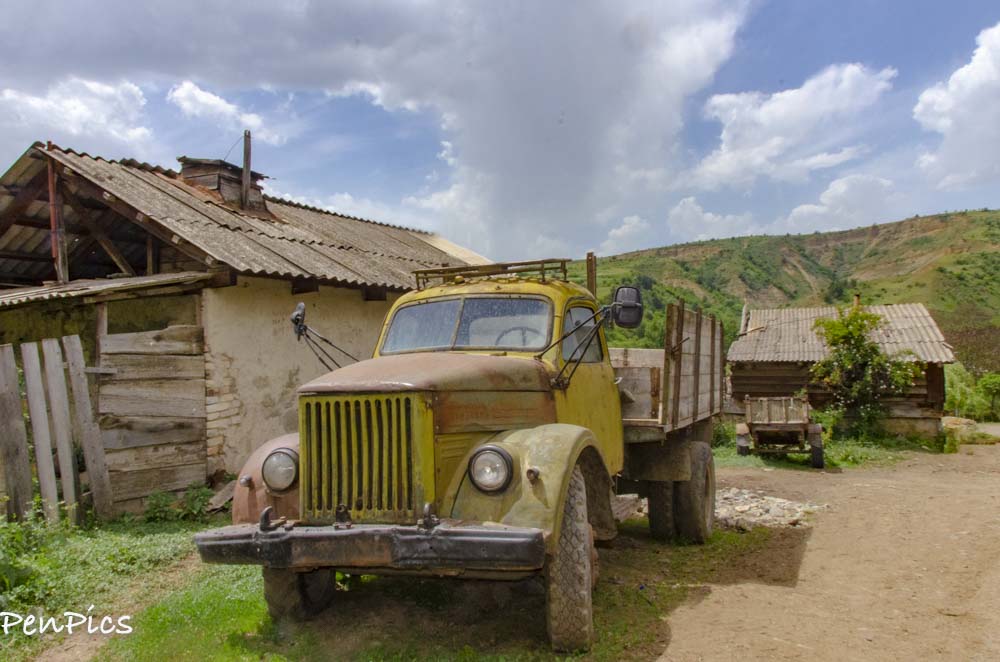



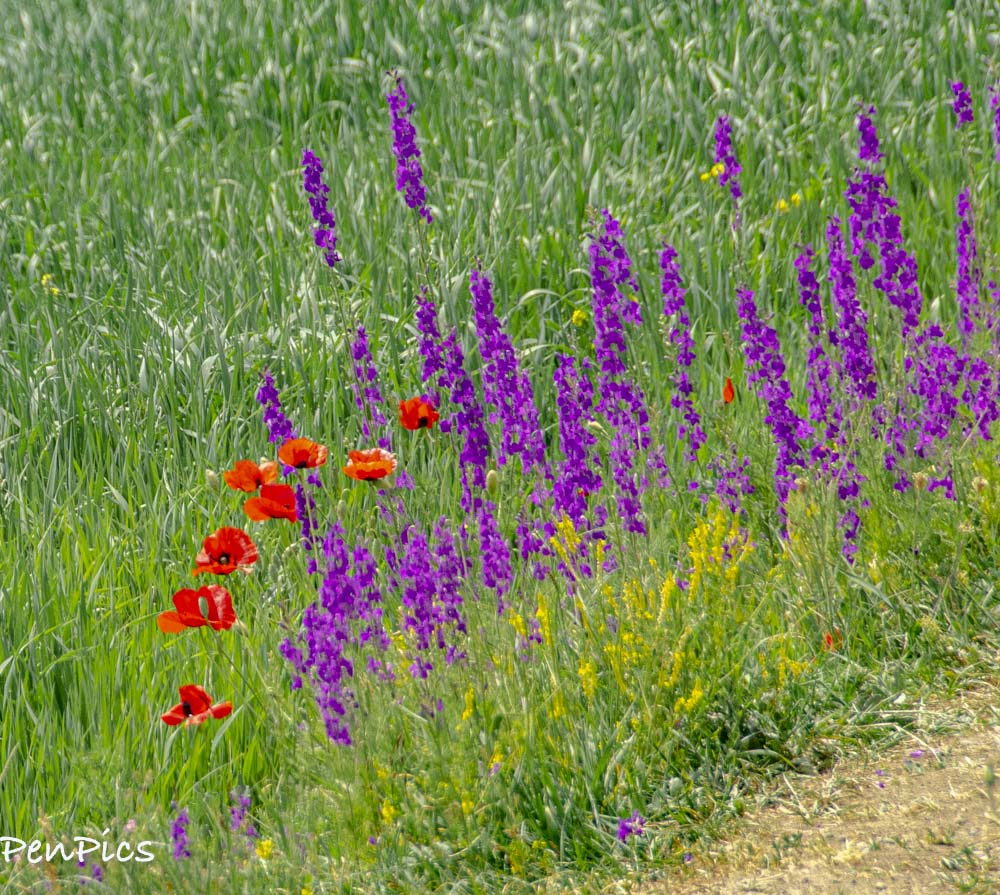 ******
******



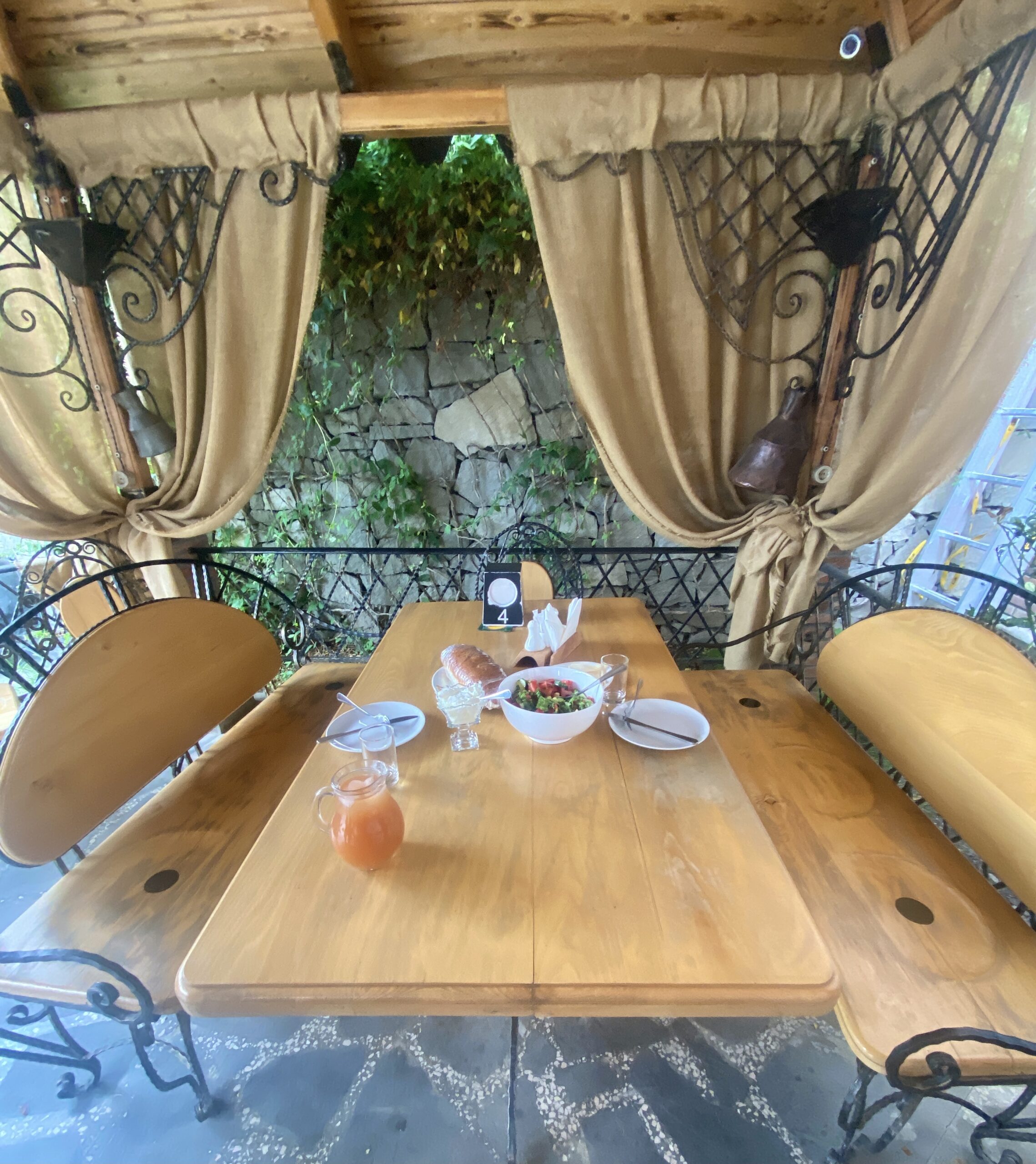 ⬆️ We enjoyed a couple tasty Georgian dinners, at the Tiflis Hotel where we stayed; just a five minute drive from the Fortress. We recommend.
⬆️ We enjoyed a couple tasty Georgian dinners, at the Tiflis Hotel where we stayed; just a five minute drive from the Fortress. We recommend.
*****
Race-ready, and well rested, on this morning, we leave the medieval town of Akhaltsikhe, to continue our way, West. We had no idea what was in store for us.

⬆️ This map was the plan, but would end up being a mistake of epic proportions, as we suddenly dead-ended in the mountains, on a road, that was mostly soft, dry dirt, till it began to rain. To get turned around, a dump truck and a backhoe had to move for us. The soft, new dirt was a result of this working combination.
Previously, to get to this dead-end, all the way from Akhaltsikhe, was the worst road we have ever endured for a bone-crushing 9+ hours; to take us to the unplanned dead-end, that was suppose to be a destination. We would learn, only AFTER all that time on the road, there is no town or city of Adjar; though the maps showed photos of a town called Adjar. ⬇️

The road construction, one day, will be complete, and this drive will, in fact, be very enjoyable, as the Lesser Caucasus Mountain Range is a site to behold! But that will be several years from now.
Like other poorer countries in our travels, we have witnessed the Chinese Engineer in force, building the new roads, where said Chinese, will actually end up owning a piece of the country in the end; in trade.
The only reason we kept going, after the first hour and a half, was our desire to get the Batumi. There are also few road choices in these poorer countries to begin with. We took a gamble the road would get better, and that was a bad call. We do not have a 4×4, with clearance, but luckily there were no big jutting rocks; just lots of holes and broken shoulders to avoid. Had there been jutting, pointed rocks, it would have ceased our ability to continue. The condition of the torn-up road, had us being tossed around for far too many hours.
We had no way of knowing, it would get worse.
By 5PM, and trying to get turned around from the dead end mistake, it would get much harder. Once we realized Adajar was a region and not a city, (as the map indicated), we then needed to figure out how to get to Batumi (our final destination on the west coast). The GPS continues to work, even when signals are lost, as long as you don’t turn off the app. We were so remote, we had no signal to enter in a new destination at this point.
 ⬆️ (If you can only imagine)
⬆️ (If you can only imagine)
We were in both a jam and a pickle! Time was not on our side, either, but all we could do was try to retrace our drive in, and hope for signage. No signs, and now the storm which had been brewing had hit! Nothing was in our favor, as we had not eaten all day, the storm was upon us, darkness was looming, and we were still driving on a torn-up road, which had been dry, but was now wet. We pushed on, as sleeping in the car did not appeal to us, either.
We split the drive time with each other to help with the aching hips. It was my drive time.We did find an okay stop for food, which was a miracle in itself, so that helped to get out of the car and get our hunger abated. Daryl offered to drive again, but I was too nervous, given the conditions, and being a passenger would have been harder on Daryl. Ha!
We drove on. We had just under an hour to go, according to the GPS. After ten miserable hours, what was one more? The car wipers could not even keep up with the rain coming down. There are never street lights outside the cities, in many countries like this, either. I ended up following the red rear lights on the cars ahead of me, who gaged the bad road, and sudden piles of gravel on the side of the road, better than me, as it was obvious they had been on the road, before. They knew the obstacle course, as we did not. Finally, we got close to Batumi, and the road became much better. We had pavement again! We were so relieved, when we made it into the real city of Batumi, and found our lodging. We would have jumped for joy; but we had no energy left for jumping.
 From our hotel room, looking over the city, after arrival, during the storm.
From our hotel room, looking over the city, after arrival, during the storm.
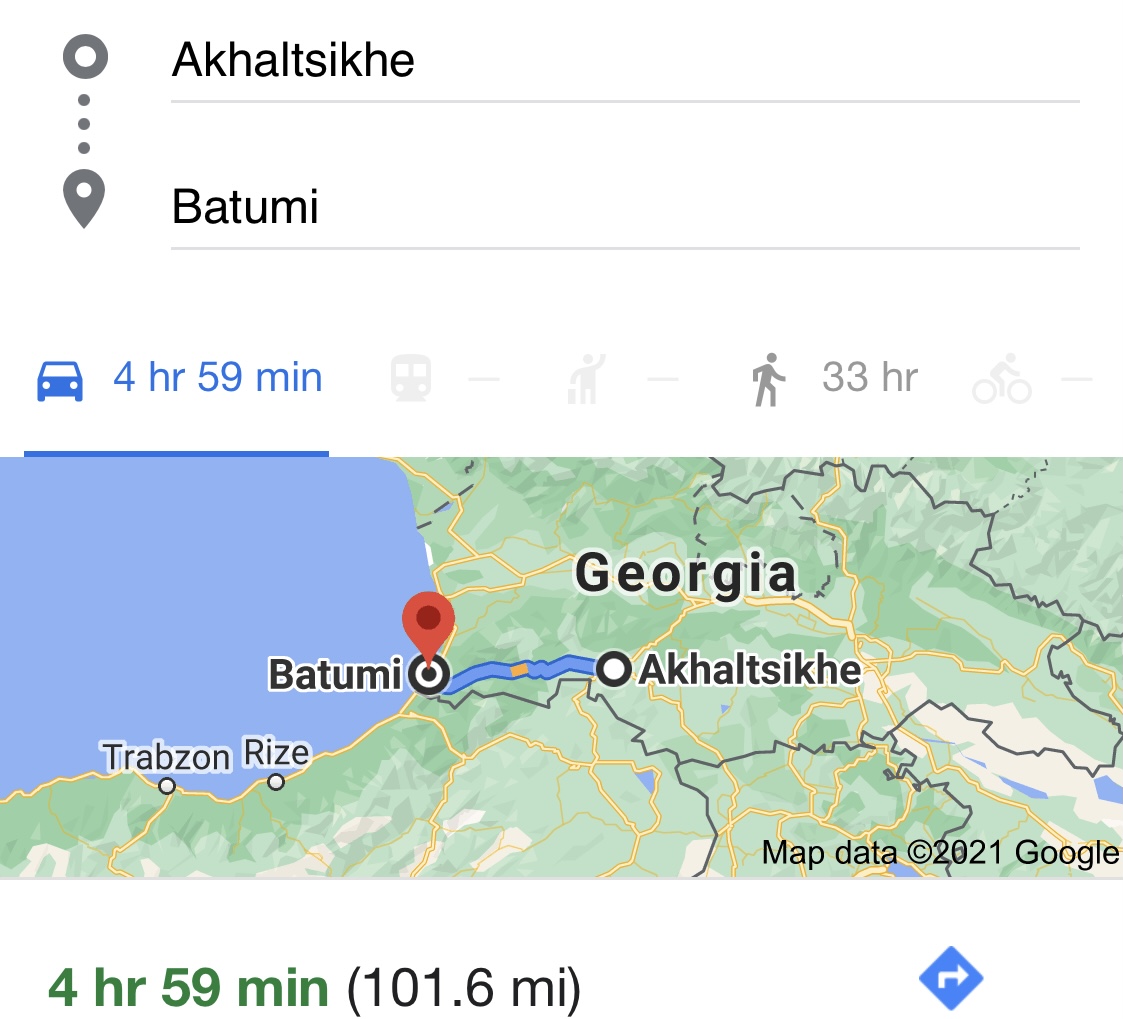 ⬆️ Even with this correct route, the hours did not match. With the road all torn up, and all the other issues, it would be 11 hours to go the 101 miles.
⬆️ Even with this correct route, the hours did not match. With the road all torn up, and all the other issues, it would be 11 hours to go the 101 miles.
******
 Same view from our room on the next morning! This was exactly what we needed to see, to reboot from the day before, and begin anew!
Same view from our room on the next morning! This was exactly what we needed to see, to reboot from the day before, and begin anew!

The sun is bright in the blue sky, above the beautiful blue-turquoise ocean waters of the Black Sea. Yes, that is an oxymoron! From our first visit to the Black Sea, I too needed to understand about the name: In ancient times, the sea was first named by the ancient Greeks who called it “Inhospitable Sea.” The sea got this reputation because it was difficult to navigate, and hostile tribes inhabited its shores.
*******
⬇️ Here are some scenic photos of our difficult drive day, to reach Batumi.
Like I mentioned, the beauty of the Lesser Caucuses Mountains were not lacking on this trip, only the road was.

Georgia is a country in the Caucasus region.
Situated at the juncture of Western Asia and Eastern Europe, it is bounded to the west by the Black Sea, to the north by Russia, to the south by Turkey and Armenia, and to the east by Azerbaijan.
 The Lesser Caucasus, also called Caucasus Minor, is the second of the two main mountain ranges of Caucasus mountains: the length of about 300 miles. The western portion of the Lesser Caucasus overlaps and converges with the Turkish part of the high Armenian plateau, in the far northeast of Turkey.
The Lesser Caucasus, also called Caucasus Minor, is the second of the two main mountain ranges of Caucasus mountains: the length of about 300 miles. The western portion of the Lesser Caucasus overlaps and converges with the Turkish part of the high Armenian plateau, in the far northeast of Turkey.

 Dandalo Bridge
Dandalo Bridge
By the Middle Ages, in the south western part of Georgia, a strong feudal kingdom was formed and many roads and stone bridges were built during this period. The beauty of this regions medieval stone bridges make them as significant as the mighty Fortresses, Monuments, and Churches which are also spread around this region.
The fact that centuries-old bridges still exist here, and have not lost their function, proves just how developed the construction technology in Georgia was at that time. Another unique feature of the old bridges are their distinct architecture and shape that never ceases to amaze.
It is noteworthy that most of the bridges date back to the 12th century and are dedicated to Tamar the Great, who reigned as Queen of Georgia from 1184 to 1213.
Dandalo Bridge, also known as Queen Tamar’s Bridge, was built over the Acharistskali River in the period between 11th-12th centuries from the local limestone.
 Here is a link to the many arch bridges in Georgia. It got too dark for us to see any more of these cool bridges, as we had planned to see. Maybe we will go back, because we love these bridges, but only if we get a wild hair!
Here is a link to the many arch bridges in Georgia. It got too dark for us to see any more of these cool bridges, as we had planned to see. Maybe we will go back, because we love these bridges, but only if we get a wild hair!
https://www.google.com/amp/s/georgiaabout.com/2013/08/22/medieval-stone-bridges-of-ajara/amp/
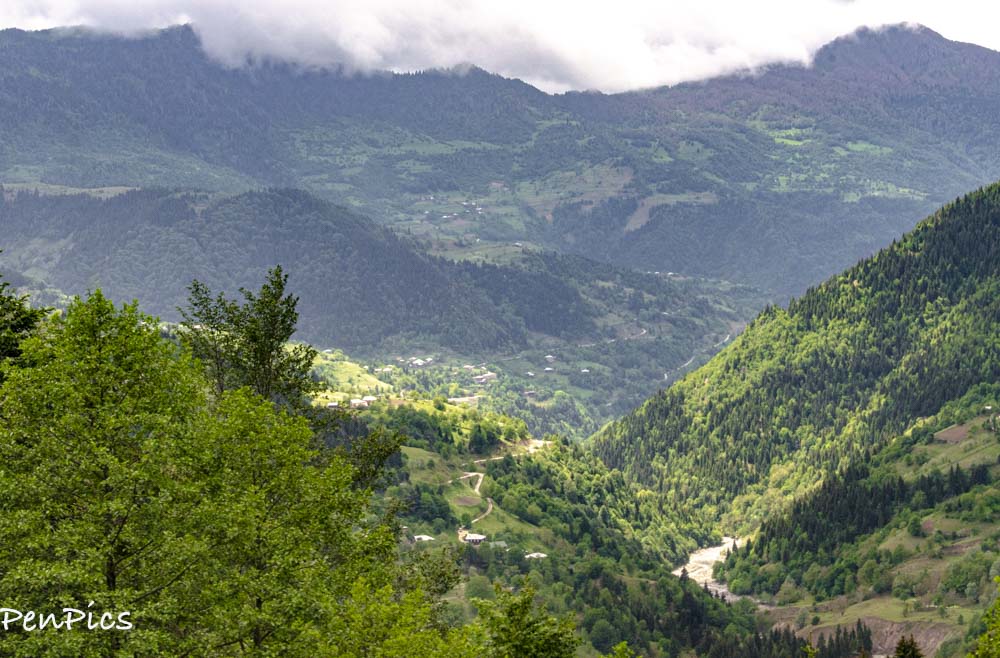

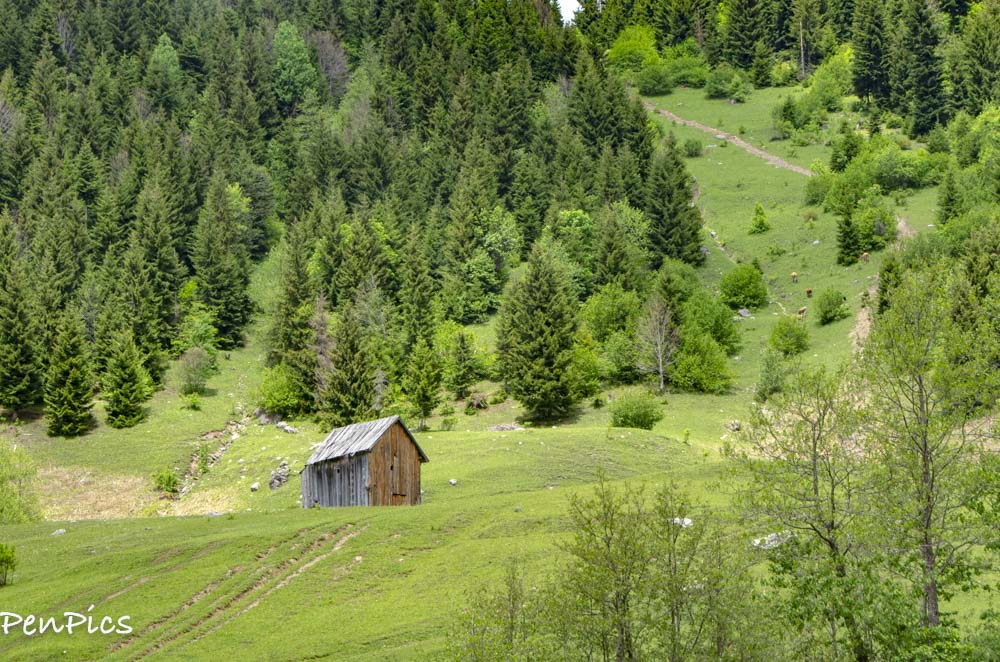




*****

Archive Blog Posts of Our Country Visits
About Us

About Us
Hello and Welcome to our Travel Blog Website, We enjoy writing about our experiences and taking photos of our adventuring along the way. Our names are: Daryl and Pen, but Daryl calls me “Bunny.” We met, quite randomly, whilst both… Read More










Oh my goodness, what an ordeal!!! Hoping you have an easier exit from this lovely region!! Sending love, hugs, and prayers. ❤️
Georgia is a bit of an ordeal. Ha! We are glad we came, but it’s not smooth sailing here. The scenery is amazing!
Thanks Laurie
Wow what a day. Some beautiful countryside
The scenes are very pretty. It’s so green here and so many trees.